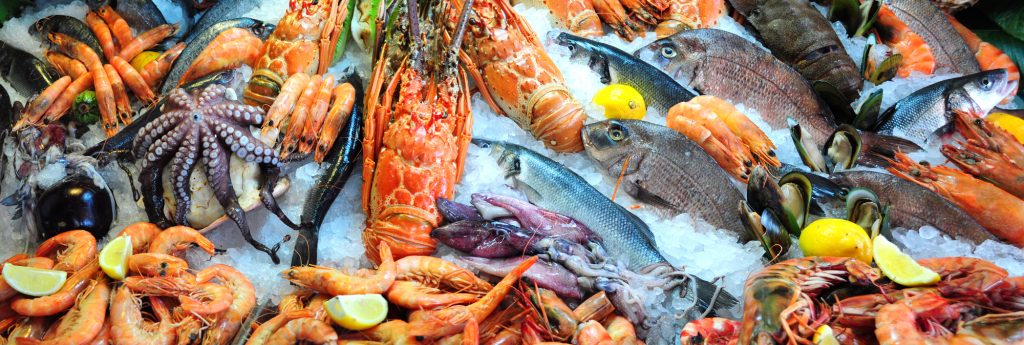This post contains affiliate links. Click here to read my affiliate policy.
Last Updated on December 16, 2023

The Paleo diet, also known as the ‘caveman diet,’ is a nutritional plan based on foods believed to have been consumed during the Paleolithic era. This diet focuses on whole foods, lean proteins, vegetables, fruits, nuts, and seeds while avoiding processed foods, grains, and dairy.
A critical aspect of the Paleo diet is its strong emphasis on high-quality protein sources, with seafood being a prime example. Rich in omega-3 fatty acids, vitamins, and minerals, seafood isn’t just nutritious but also incredibly versatile in cooking.
And if you’re seeking culinary inspiration, some of the best seafood Siesta Key restaurants and similar food hubs offer a glimpse into how delicious and varied these dishes can be.
Sustainable And Ethical Eating
When selecting seafood, it’s a good idea to pick wild-caught or sustainably farmed varieties. This approach helps preserve marine biodiversity and ensures fishing practices don’t detrimentally impact oceanic ecosystems.
By doing so, you’re nurturing your body with high-quality nutrients and contributing to the health of our planet. It’s a practice that aligns seamlessly with the Paleo philosophy of eating naturally and responsibly, reflecting a deeper understanding and respect for nature’s balance.
Nutritional Value Of Seafood
Seafood is a powerhouse of nutrition, offering an impressive array of health benefits. It’s a rich source of high-quality protein, essential for muscle maintenance and repair.
Also, seafood, especially salmon and mackerel, are abundant in omega-3 fatty acids. These nutrients are crucial for brain health and play a vital role in reducing inflammation.
Furthermore, seafood is an excellent source of vitamins, particularly vitamin B12, and minerals such as zinc, iodine, and selenium. These elements are pivotal for bolstering your immune system and enhancing overall wellness.
With seafood in your diet, you’re not just enjoying diverse flavors but also nourishing your body with essential nutrients crucial for maintaining good health.

How To Select And Prepare Seafood
Choosing seafood for your Paleo diet can be both exciting and daunting. But don’t worry, you’ve got this! It’s all about knowing what to look for and how to whip it up into something mouthwatering.
- Choosing The Right Seafood
You want to look for the freshest fish and shellfish you can find. If you’re going for fish, it should smell like the sea, not ‘fishy.’ The eyes should be clear and bright, not cloudy. The flesh? It should bounce back when you give it a gentle poke.
If you’re eyeing shellfish, make sure they’re alive before you cook them. They should close when tapped if they’re open. Frozen seafood is a fantastic option, too. Often, it’s flash-frozen right on the boat, keeping all that fresh-from-the-ocean goodness intact.
- Cooking Techniques For Maximum Flavor
Now, it’s time to cook! Seafood is amazingly versatile and doesn’t need much to shine. Whether grilling, baking, steaming, or sautéing, each method brings out unique flavors and textures. Keep things simple. A little bit of herbs or maybe a squeeze of lemon, and you’re in for a treat.
There’s no need to drown those delicate flavors under heavy sauces. Feel free to play around with different cooking styles. Who knows? You might just find your new favorite way to enjoy seafood.
Now, you’re all set to pick and prepare seafood like a pro. Trust your senses, keep it simple, and most importantly, have fun. Your Paleo diet is about to get a whole lot tastier!
Debunking Seafood Myths
You’ve probably heard a few things about seafood that might make you hesitate. Let’s clear up some common myths:
- All Seafood Is High In Mercury: This isn’t the case. Sure, some fish have higher mercury levels, but many types, like salmon and sardines, are pretty low in mercury. These are safe to enjoy regularly. Don’t let this misconception stop you from exploring the wide range of seafood available.
- Seafood Is Hard To Prepare: It’s quite the opposite. Seafood is one of the simplest and quickest foods to cook. Whether you’re baking or sautéing, seafood often requires just a few minutes and some basic seasonings to taste great. You don’t need to be a gourmet chef to whip up a delicious seafood dish.
- Fresh Seafood Is The Only Good Option: Fresh is great, but don’t overlook frozen seafood. Often, seafood is flash-frozen right after it’s caught, locking in freshness and flavor. It’s a convenient and often more affordable option that’s just as nutritious.
So, don’t let these misconceptions hold you back. With a bit of knowledge, you can safely and enjoyably include a variety of seafood in your Paleo diet.
Final Thoughts
Seafood is an integral part of the Paleo diet, offering a wealth of nutritional benefits and culinary diversity. Whether you’re dining at a renowned seafood restaurant or cooking at home, the options are endless and always satisfying.
Embrace the variety and health benefits that seafood brings to your Paleo journey, and you’ll discover a world of delicious, nutritious possibilities.

